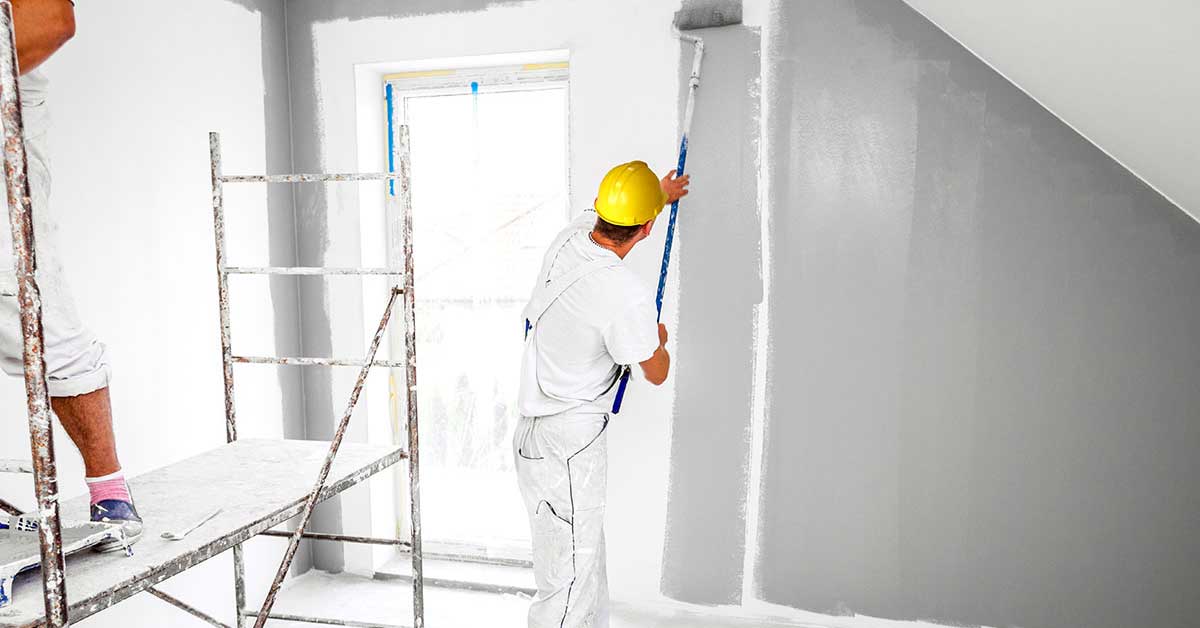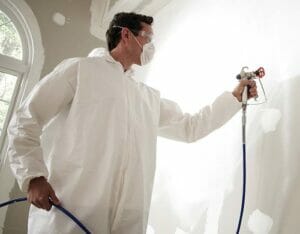
Every professional painter knows that having the right painting equipment makes all the difference in the quality of work, efficiency, and overall success of a project. This is especially important when trying to grow your painting business. In this comprehensive guide, we'll cover the essential tools you need to deliver outstanding results and ensure your painting projects run smoothly.
1. Painting Preparation Tools
1.1 Drop Cloths
Drop cloths are essential for protecting floors, furniture, and other surfaces from paint spills and splatters. Choose heavy-duty canvas or plastic drop cloths for maximum durability and protection.
1.2 Painter's Tape
Painter's tape is crucial for creating clean, crisp lines and protecting areas that should not be painted. Invest in high-quality tape to ensure easy removal without damaging surfaces or leaving residue.
1.3 Sandpaper and Sanding Tools
Sanding surfaces before painting is critical to achieving a smooth and even finish. Stock up on a variety of sandpaper grits and sanding tools, such as sanding blocks, sanding sponges, and orbital sanders.
1.4 Patching Compound and Putty Knife
Patching compound and a putty knife are necessary for filling holes, cracks, and other imperfections on surfaces before painting. Choose a fast-drying, easy-to-sand compound for best results.
1.5 Paint Brushes and Rollers
Invest in high-quality paint brushes and rollers for a smooth, even application of paint. Brushes come in various sizes and bristle types, while rollers are available in different sizes, materials, and nap lengths.

1.6 Extension Poles
Extension poles are invaluable for reaching high areas without the need for a ladder. Select telescoping poles with sturdy construction and secure locking mechanisms.
Just starting? Try our free Painting Estimate Template
2. Paint Application Tools
2.1 Paint Sprayer
A paint sprayer is a highly efficient tool for applying paint quickly and evenly. Choose between airless, HVLP, and air-assisted sprayers based on your specific project requirements and preferences.
2.2 Paint Trays and Liners
Paint trays and liners are necessary for holding paint and facilitating the use of rollers. Opt for sturdy trays with a convenient pour spout and disposable liners for easy clean-up.
2.3 Ladders and Scaffolding
Ladders and scaffolding are essential for reaching high areas and ensuring safety while painting. Choose ladders with non-slip feet and scaffolding with sturdy construction and safety features.

3. Paint Mixing and Storage Tools
3.1 Paint Stir Sticks and Mixing Paddles
Paint stir sticks and mixing paddles are vital for thoroughly mixing paint to achieve a consistent color and texture. Wooden stir sticks are cost-effective, while metal or plastic paddles are more durable.
3.2 Paint Can Openers and Closers
A paint can opener and closer are essential for easily opening and securely closing paint cans. Invest in a quality tool that won't bend or break with regular use.
3.3 Paint Containers and Lids
Paint containers and lids are crucial for storing and transporting paint. Choose containers with airtight lids to prevent spills and preserve paint quality.
4. Safety Equipment
4.1 Safety Glasses
Safety glasses are essential for protecting your eyes from paint splatters, dust, and debris. Choose a comfortable, durable pair with anti-fog and scratch-resistant lenses.
4.2 Respirators and Dust Masks
Respirators and dust masks are critical for protecting your lungs from paint fumes, dust, and other airborne particles. Select a proper mask with appropriate filters based on the specific paint and job requirements.

4.3 Gloves
Gloves are important for protecting your hands from paint, chemicals, and other hazards. Opt for disposable nitrile gloves or reusable gloves made from materials like latex or neoprene, depending on your preferences and job requirements.
4.4 Protective Clothing
Protective clothing, such as coveralls or painter's pants, shields your regular clothes from paint and prevents contamination. Choose clothing made from durable, easy-to-clean materials like cotton or polyester.
5. Clean-Up Supplies
5.1 Paint Scraper
A paint scraper is essential for removing loose or peeling paint before repainting a surface. Choose a scraper with a comfortable grip and sturdy blade for efficient paint removal.
5.2 Paint Thinner and Solvents
Paint thinner and solvents are crucial for cleaning brushes, rollers, and other painting equipment. Select the appropriate solvent based on the type of paint you're using (e.g., water-based or oil-based).
5.3 Rags and Paper Towels
Rags and paper towels are necessary for wiping up spills, cleaning tools, and general clean-up tasks. Opt for reusable, absorbent rags or disposable paper towels based on your preference.
5.4 Trash Bags
Heavy-duty trash bags are essential for disposing of used painting supplies, debris, and waste. Choose puncture-resistant bags with a high weight capacity for easy clean-up and disposal.
6. Organizing and Transporting Tools
6.1 Toolboxes and Bags
Toolboxes and bags are indispensable for organizing, storing, and transporting your painting equipment. Select a durable, spacious option with multiple compartments for easy access to your tools.
6.2 Utility Carts
Utility carts are invaluable for transporting heavy paint cans, tools, and equipment. Choose a sturdy cart with large wheels for easy maneuverability on various surfaces.
6.3 Painter's Buckets
Painter's buckets are useful for carrying paint, tools, and supplies. Opt for sturdy, easy-to-clean buckets with comfortable handles for efficient transport.
Try our Painting Contractor Software to help manage your business
Final Thoughts
In conclusion, having the right painting equipment is crucial for professional painters. This comprehensive list covers all the essentials, from preparation to clean-up, ensuring that you have the tools you need to deliver high-quality results and make your painting projects run smoothly. By investing in quality equipment and organizing your tools effectively, you'll improve your efficiency, work quality, and overall success in the painting industry.
